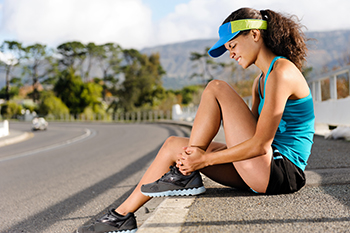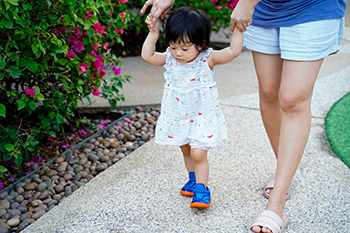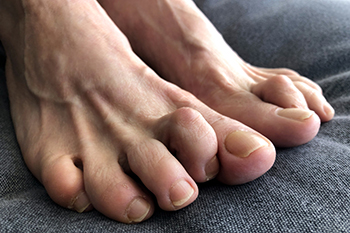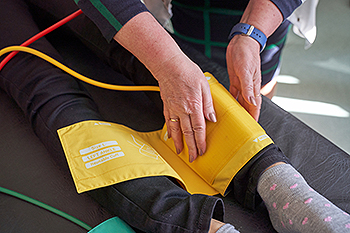Connect With Us
Blog
Items filtered by date: February 2024
Getting Started Running Without Injury

Starting your journey as a runner can be a fulfilling endeavor for both physical fitness and mental well-being, but it's important to approach it with caution to avoid injury. Begin by setting realistic goals and pace yourself according to your fitness level. Invest in quality running shoes that provide proper support, cushioning, and fit. To build endurance gradually, try the run-walk-run method, alternating between running and walking intervals. Always warm up before and cool down after each run, with dynamic and static stretches respectively, to prepare your muscles and aid recovery. Increase your mileage gradually to avoid overexertion, aiming for consistency in your running routine with three to four runs per week. Incorporate various types of runs, such as interval training and hill repeats. Listen to your body and take rest days as needed, paying attention to any signs of discomfort or persistent pain. If you sustain an injury from running, it is suggested that you make an appointment with a podiatrist for an exam and treatment.
Exercising your feet regularly with the proper foot wear is a great way to prevent injuries. If you have any concerns about your feet, contact Chuc Dang, DPM of California . Our doctor will treat your foot and ankle needs.
How to Prevent Running Injuries
Many common running injuries are caused by overuse and overtraining. When the back of the kneecap starts wearing out and starts causing pain in your knee, this is commonly referred to as runner’s knee. Runner’s knee is a decrease in strength in your quadriceps and can occur if you’re not wearing properly fitted or supporting shoes. To prevent runner’s knee, focusing on hip strengthening is a good idea, as well as strengthening your quads to keep the kneecaps aligned.
What Are Some Causes of Running Injuries?
- One cause of a common running injury is called iliotibial band syndrome.
- Plantar fasciitis is also another common injury.
- Stress fractures can occur from overtraining, lack of calcium, or even your running style.
Best Ways to Prevent Running Injuries
- Wear footwear that fits properly and suits your running needs.
- Running shoes are the only protective gear that runners have to safeguard them from injury.
- Make a training schedule. Adding strengthening exercises as well as regular stretching can help keep you strong and limber and can lessen the possibility of injuries.
- Stretching keeps muscles limber; this will help you gain better flexibility.
If you have any questions please feel free to contact our office located in Westminster, CA . We offer the newest diagnostic and treatment technologies for all your foot and ankle needs.
Arthritis Can Cause Pain in the Feet and Ankles
Measuring Baby Shoe Sizes

Measuring your baby's feet for the right shoe size is essential for their comfort and healthy foot development. Begin by grabbing a piece of paper and a pencil to trace your baby's foot. Place the paper on a flat surface and gently press your baby's foot onto it, ensuring it lies flat without curling toes. Carefully trace the outline of their foot with the pencil. Once the outline is complete, use a ruler to measure the length from the heel to the longest toe. Repeat the process for both feet, as slight differences in size are common. With the measurements in hand, refer to the sizing chart provided by the shoe manufacturer or retailer to determine the appropriate shoe size for your baby. Remember that baby shoe sizes can vary between brands, so it is a good idea to consult the specific sizing guidelines for accurate fitting. By following these simple steps, you can ensure that your baby's feet are comfortably supported as they explore the world around them. If you are seeking more detailed guidelines about how to measure your baby’s feet or if their shoes are causing them problems, it is suggested that you confer with a podiatrist.
Making sure that your children maintain good foot health is very important as they grow. If you have any questions, contact Chuc Dang, DPM of California . Our doctor can provide the care you need to keep you pain-free and on your feet.
Keeping Children's Feet Healthy
Having healthy feet during childhood can help prevent medical problems later in life, namely in the back and legs. As children grow, their feet require different types of care. Here are some things to consider...
Although babies do not walk yet, it is still very important to take care of their feet.
Avoid putting tight shoes or socks on his or her feet.
Allow the baby to stretch and kick his or her feet to feel comfortable.
As a toddler, kids are now on the move and begin to develop differently. At this age, toddlers are getting a feel for walking, so don’t be alarmed if your toddler is unsteady or ‘walks funny’.
As your child gets older, it is important to teach them how to take care of their feet.
Show them proper hygiene to prevent infections such as fungus.
Be watchful for any pain or injury.
Have all injuries checked by a doctor as soon as possible.
Comfortable, protective shoes should always be worn, especially at play.
If you have any questions please feel free to contact our office located in Westminster, CA . We offer the newest diagnostic and treatment technologies for all your foot and ankle needs.
Surgical Options for Hammertoe

Hammertoe, a deformity characterized by curled or flexed toes, may necessitate surgical intervention when conservative treatments fail to provide relief. Surgical hammertoe options include bone resection to remove portions of toe bones, tendon procedures involving manipulation or transplantation to correct the imbalance, and joint fusion to stabilize the toe. Following surgery, pins or wires may be used temporarily to maintain alignment during healing, with patients transitioning to supportive footwear to aid recovery. Surgical considerations are driven by functional impairment and pain, with persistent symptoms such as pain, irritation, and skin complications warranting consideration for intervention. However, surgery may not be recommended if conservative measures suffice or if the risks outweigh the benefits. It is important to explore all treatment plans before deciding on whether to have surgery. For this reason, if you have a hammertoe that is impeding your daily activities, it is suggested that you schedule an appointment with a podiatrist.
Hammertoes can be a painful condition to live with. For more information, contact Chuc Dang, DPM of California . Our doctor will answer any of your foot- and ankle-related questions.
Hammertoe
Hammertoe is a foot deformity that occurs due to an imbalance in the muscles, tendons, or ligaments that normally hold the toe straight. It can be caused by the type of shoes you wear, your foot structure, trauma, and certain disease processes.
Symptoms
- Painful and/or difficult toe movement
- Swelling
- Joint stiffness
- Calluses/Corns
- Physical deformity
Risk Factors
- Age – The risk of hammertoe increases with age
- Sex – Women are more likely to have hammertoe compared to men
- Toe Length – You are more likely to develop hammertoe if your second toe is longer than your big toe
- Certain Diseases – Arthritis and diabetes may make you more likely to develop hammertoe
Treatment
If you have hammertoe, you should change into a more comfortable shoe that provides enough room for your toes. Exercises such as picking up marbles may strengthen and stretch your toe muscles. Nevertheless, it is important to seek assistance from a podiatrist in order to determine the severity of your hammertoe and see which treatment option will work best for you.
If you have any questions, please feel free to contact our office located in Westminster, CA . We offer the newest diagnostic and treatment technologies for all your foot care needs.
Symptoms and Risk Factors of Peripheral Artery Disease

Peripheral artery disease, or PAD, affects approximately 10 million adults in the U.S., with about five percent of those over 50. The condition is slightly more prevalent in men. Peripheral artery disease is caused by clogged arteries that block the flow of blood to the lower legs and feet. Risk factors include high cholesterol, smoking, diabetes, and hypertension. Others are family history, chronic renal failure, obesity, and physical inactivity. Common symptoms can include intermittent pain with exercise and severe pain in legs, especially at night. Additional signs of PAD are numbness, weakness, and muscle atrophy in legs, coldness and color changes in feet, and hair loss on the arms and legs. Thickening toenails and poor wound healing, which may lead to ulcers and gangrene, are also telltale signs of PAD. Prompt recognition of symptoms and risk factors is important to prevent complications that can include tissue damage. If you are experiencing symptoms of PAD in the lower leg and feet, it is suggested that you visit a podiatrist for a thorough exam.
Peripheral artery disease can pose a serious risk to your health. It can increase the risk of stroke and heart attack. If you have symptoms of peripheral artery disease, consult with Chuc Dang, DPM from California . Our doctor will assess your condition and provide you with quality foot and ankle treatment.
Peripheral artery disease (PAD) is when arteries are constricted due to plaque (fatty deposits) build-up. This results in less blood flow to the legs and other extremities. The main cause of PAD is atherosclerosis, in which plaque builds up in the arteries.
Symptoms
Symptoms of PAD include:
- Claudication (leg pain from walking)
- Numbness in legs
- Decrease in growth of leg hair and toenails
- Paleness of the skin
- Erectile dysfunction
- Sores and wounds on legs and feet that won’t heal
- Coldness in one leg
It is important to note that a majority of individuals never show any symptoms of PAD.
Diagnosis
While PAD occurs in the legs and arteries, Podiatrists can diagnose PAD. Podiatrists utilize a test called an ankle-brachial index (ABI). An ABI test compares blood pressure in your arm to you ankle to see if any abnormality occurs. Ultrasound and imaging devices may also be used.
Treatment
Fortunately, lifestyle changes such as maintaining a healthy diet, exercising, managing cholesterol and blood sugar levels, and quitting smoking, can all treat PAD. Medications that prevent clots from occurring can be prescribed. Finally, in some cases, surgery may be recommended.
If you have any questions, please feel free to contact our office located in Westminster, CA . We offer the newest diagnostic and treatment technologies for all your foot care needs.
